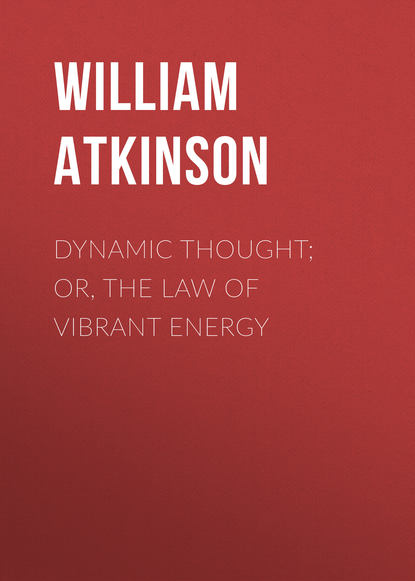По всем вопросам обращайтесь на: info@litportal.ru
(©) 2003-2024.
✖
Dynamic Thought; Or, The Law of Vibrant Energy
Настройки чтения
Размер шрифта
Высота строк
Поля
In appearance the "Diatoms" resemble the chemical crystals. These "Diatoms" are minute one-celled living "Things," having a hard but thin siliceous covering or shell, of extreme delicacy. They are what are known as "microscopic" creatures – that is, visible only through the microscope. Some of them are so small that it would take a thousand or more to cover the head of a pin. But, remember this – the microscope reveals them as "living creatures" performing vital functions. They are found in the deep waters of the ocean. To the naked eye they appear like fine sand or "dirt," but under the most powerful microscope, they are seen to comprise many species and varieties, exhibiting many peculiar shapes and forms – in fact, they have been called "living geometrical forms," their shapes and appearances almost exactly resembling those of the chemical and mineral crystals.
Science informs us that these and similar microscopic creatures, number thousands of families or species, – and it is thought that the varieties of microscopic creatures outnumber the varieties of creatures visible to the unaided sight. And, remember, that there is probably a still greater world of "sub-microscopic" creatures, that is a world invisible even when the most powerful microscope is used. Who knows what wonders are to be found there – what forms of creatures live, and move and have their being there.
In passing by the subject of the resemblance between the outward forms of living things and the crystals, it is interesting to note how the crystals of frost and ice resemble the forms of leaves, branches, flowers, foliage, etc. – the pane of glass covered with these frosty forms, resembles a garden. The disk of saltpeter, under the effect of polarized light, very closely resembles the form of the orchid.
Recent scientific experiments have shown that certain metallic salts, when subjected to a galvanic current, group themselves around one of the poles of the battery, and assume a mushroom-like shape and appearance. At first, they seem to be transparent, but gradually they assume color, the top becoming a bright red, with the under-side showing a pale rose color, the stem being of a pale straw color. The discoverers of these peculiar forms, called them by the German equivalent for "inorganic mushrooms," but even this term seems scarcely worthy of them, for they even show a trace of something like organs. Under the microscope they are seen to have fine canals or vein-like channels running through their stems, from top to base. And through these "veins" the "thing" absorbed fresh material and actually "grew" like low forms of fungus-life. Were these things merely minerals or chemical-substances, or were they low forms of organic life? The lines between the Inorganic and the Organic are being wiped out rapidly. The Supreme Power that caused Life to Be, caused it to All, and did not divide Its manifestations into Dead-Things and Live-Things, but breathed into all the Breath of Life. And the more clearly we see the actual evidence of this, the greater does that Supreme Power seem to us.
A very low form of living creatures called the Monera, is held by Science to be the one of the strands of the connecting link between the organic and inorganic worlds. The Monera are the lowest and simplest form (at least so far known) of organic life. They may be said to be "organic" creatures without organs– being but little more than simple cells – tiny globules of plasm, surrounded by a thin membrane – their sole vital function being the absorption of nourishment through the pores of their covering (just as a piece of chalk would absorb water) and the consequent conversion of the nourishment into material for growth, the whole process resembling chemical action. The Monera reproduce their kind simply by cleavage or separation of the substance of the mother cell into two, and so on, being little more than the "growth" of crystals. The Monera are everywhere recognized, without question, as "living creatures," but they exhibit merely a trace more of life than do certain forms of crystals.
The difficulty in considering crystals as "living things" is partially due to the outward form and substance, so different from the form and substance of the higher "living things." But we have seen that the Diatoms took on shapes of crystals, and that the outer shell or covering was similar to silicia, a mineral, the inner substance being but a tiny speck of plasm, similar to that of the substance of a plant cell. And then we may look to the tiny bit of chalk dust which was once the skeleton-form of a living creature. The same is true of coral. In the very low forms of life, the skeleton, or form, is the thing most apparent, the plasm of "living substance" being still smaller, and less apparent. And yet, the skeleton, or shell, was formed by the vital processes of the creature, and was a part of its "body," just as is the skeleton or bony structure of the higher animals. And, in the same sense it is "living substance." And, remember, that there is but little difference between these "bodies" of the low forms of life, and the bodies of crystals. And the chemical constituents of its plasmic inner body is but slightly different from that of the crystals. And its nature and vital process are by a shade higher in the scale than those of the crystals.
You may ask why we have said so much of Crystals. The reason is just this – Science has begun to think of Crystals as semi-living things, and its most advanced investigators and thinkers go further and assert that "the Crystals are alive – Crystallization is an evidence of life process."
Crystals arrange themselves in well-known and well-defined shapes, direction and order of formation being observed implicitly. Each crystal follows the laws and habits of its kind, just as do plants and animals. Its lines of crystallization are mathematically perfect, and according to the laws of its being. Not only this, but some substances have a range of six or seven different forms of crystal-forms possible to them. In some cases a chemical element assumes one form of crystallization when it manifests as one mineral, and a second form when it manifests in another form – in each case however, it manifests along well-known and recognized courses of action, movement, and shapes.
Crystals may be "killed" by a strong electrical discharge – that is, they are so affected that they disintegrate, their atoms separating to form new combinations, just as is the case with the "bodies" of higher forms of life. Some scientists have gone so far as to claim that they had discovered something akin to rudimentary sex-action in certain crystals, resembling the sex-process of the lowest plant-life. But this has not, as yet, been positively established, although it seems probable and reasonable. A recent writer in one of the magazines has said, "Crystallization, as we are to learn now, is not a mere mechanical grouping of dead atoms. It is a birth." This may seem mere "scientific poetry" until the process of crystallization is carefully studied, when it will be seen to give evidence, not only of something like vital and mental action, but also something very much like reproductive functioning of the lower forms of "life."
There is an "assimilation" of material to build up the crystal in the first place, just as an animal assimilates matter to build up its shell – or a tree to form its bark. The "form" of the crystal is truly its "body," and behind and in that body there is "something at work" that is not the body, but which is forming it. And, later on, that crystal increases in size, and then begins to separate into two, throwing off a smaller crystal, identical in form with the parent crystal. This manner of reproduction is almost identical with the process of reproduction in the lower forms of "life," which consist merely of a like separation of the parent form into two, and the throwing off of the offspring.
The principal difference between the growth of crystals and of the Monera, is that the Crystals grow by absorbing fresh matter and attaching it to their outer surface, while the Monera grow by absorbing fresh material and growing outwardly, from within. But this may be accounted for by the difference in the density of their bodies, the Crystal being very solid, while the Monera is like a thin jelly. If the Crystal had a soft interior, it could grow like the Monera or Diatom, but then it would be a Diatom.
The process of crystallization is accountable only by the theory that in the crystal there exists something like life and Mentation. There is something more than mere "mechanical motion," or blind chance at work here. Does not the process of crystallization look like rudimentary purposive action? It may be said that it is movement and action in accordance with some established "Law of Nature" – granted, but is not that also true of the physical processes and growth of higher forms of life? Is the forming of the Crystal-form to be considered as a "mechanical effect," and the forming of the "shell" of the Monera to be considered a "mental and vital action?" If so, wherefore?
The point is that Crystals act as if they are "alive," and capable of assimilation, growth, and reproduction, in a manner and degree differing but very slightly from corresponding functioning of the lower forms of "life." Verily the Crystals are "alive" – and if alive they must have at least a trace of "Mind." Does it not appear that they exhibit something very like both? Quoting from a recent writer, let us notice that: "Recent investigations in the new department of science, which has been termed 'plasmology,' show in crystals phenomena which are absolutely analogous to vital phenomena – so much so that photographs of certain forms produced in the changes of crystals appear to be almost exact duplicates of those in the various lower forms of microbes. The question has been raised as to whether the microbe is no more alive than the crystal, or the latter equally endowed with life as is the former."
And now another step, in our search for Life. Remember, that the hardest rocks are composed of crystals of certain kinds. And, if the higher crystals have Life, then it is only fair to suppose that the lower and cruder forms are likewise endowed, even if in a still lower degree. And if all crystals are endowed with Life, then the most solid rocks, being composed of aggregations of crystals must be masses of Inorganic Life – and consequently, of Inorganic Mind. A Crystal, according to Webster, is "the regular form, bounded by plane surfaces, which a substance tends to assume in solidifying, through the inherent powers of cohesive attraction."
That definition of Webster tells the whole story, and we see that a "Crystal" is merely a "regular form" of a "Substance," which the substance "tends to assume in solidifying" – that is in re-assuming a solid form after being in a liquid or melted state, and that is just what all the rocks of the earth did when they emerged from the melted state in which they existed in the early days of the world's history. And this "tendency" that caused them to solidify, and assume certain crystal forms, and which must have existed potentially through the melted state – what of that, what is this "tendency" or force. The definition answers: "the inherent powers of cohesive attraction."
So, here is "Cohesive Attraction," that we shall consider fully in forthcoming chapters of this book. "Inherent," too, the definition says. What is "Inherent?" Let us see, Webster defines "Inherent" as "permanently existing." So this power of Cohesive Attraction "permanently existed" in the Substance or else in connection with it. Let us take another look at Cohesive Attraction.
Cohesive Attraction is that form of Universal Attraction that causes the Molecules of a body to draw together – that "invisible power of" the Molecule, by which it draws another Molecule toward itself, and itself toward the other, the manifestation of which power by several Molecules tends to draw each of them together. (We shall learn of these particles of Substance called Molecules before long.) It is a primal cause of Motion, this mutual Attraction, and drawing-power. Now is it reasonable to suppose that this wonderful "power" is a mere blind-force? Is it not more reasonable to think of it as a form of vital-action – life-action? "Dead" things could not manifest this force and action.
And if this Cohesive Attraction is an evidence of Life, then all substance must have Life manifesting through it. Not only the rocks, but the soil and earth and dirt, for they are but crumbled rock.
And, when we thus consider Substance, as being the "body" through which Life is Manifesting, we must not lose sight of the Molecules and Atoms, in our consideration of the Mass. A bit of rock; crystal; or dirt; is but an aggregation of countless Molecules, grouped together in certain crystallized shapes and forms, each having characteristics of its own. These Molecules cling together, in accordance with their mutual Attractive powers.
And each of these Molecules is composed of a number of Atoms, which cling together in accordance with Chemical Affinity, or Chemism – but which is but another name for Attraction, or Cohesion – and which form a little family, called a Molecule. And these Atoms are composed of Corpuscles. We will waive the consideration of the Corpuscle, for the moment, but even if we consider it, we only carry the subject back a step farther. What we wish to say, could be said even if there were ten further divisions of Substance – or a million, for that matter.
The point we wish you to consider now, is that we must separate the Mass into its constituents – its Molecules, Atoms, and even Corpuscles – in our search for the Life in the Mineral and Chemical World. If there is Life in the Mass, there must be life in the Molecule, Atom, or Corpuscle. Now, do we find it there? Certainly, for the tiniest Atom manifests its Attractive Power, and not only does it draw other atoms to itself by virtue thereof, but it even goes a step further, and shows a "preference" – a degree of "liking" in its mutual relations with other atoms.
We shall see, in future chapters, that there is "desire," "love," "marriage," and "divorce" among the chemical Atoms. We shall consider the flirtations, and love-affairs of certain Atoms. We shall see how an Atom will leave another, and fly to a new charmer. We shall have many evidences of the Atom's power to receive sensations, and to respond to the same. Nothing "dead" about this, is there? The Atom is "very much alive." The Attraction; Affinity; and Motions, of the Atom, give a certain evidence of something "very much like Life," as we see it in higher forms. In the Atom exists all the Life that causes crystallization. And in the Atom lies that which causes Force and Motion to manifest. Verily, the Atom lives and moves and has its being.
And, so our journey is ended – we have traced Life to its last stages of manifestations – and we have found it there, and at each step of the journey. But, stop, we have not completed our journey – we have but begun it. "Why," some of us may cry, "how can we go back of the Atom, or Electron?" The answer is "INTO THE ETHER"!
Yes, back of the Atom and the Corpuscle, is said by Science to lie that wonderful, paradoxical Something they call The Universal Ether – that Something that Science has considered the Womb of Matter and Force – Something that is different from Anything ever known or dreamed of by Man, – that Something which Science has labored so diligently to build up, and which it has used as an "explanation" for so much phenomena, but regarding which, of very recent date, there has begun to grow a distrust and a suspicion, owing to the discovery of Radiant Matter, and things that followed in its train. But, notwithstanding these shadowy suspicions, Science still asserts in belief in the constancy and integrity of The Ether, and it behooves us to investigate that wonderful region in which it dwells, in order to see whether Life and Mind are also to be found there. We think that, in the words of the street, we shall find that they are "very much there."
And, so in later chapters of this book, we shall consider the Etherial Region very fully. But before doing so, we had better give Substance and Motion, in all their forms, a careful consideration, for a correct understanding of them is vitally necessary for an intelligent conception of the ideas underlying the philosophy to be herein set forth.
Now, pray do not leave this chapter with the belief that the writer has said that the Particles of Inorganic Substance are endowed with Conscious reasoning powers. Nothing of the kind has been said – nothing of the kind is meant. The Life and Mind evidenced in the Particles are but the faintest glimmerings. There is no sign of "consciousness" or "reasoning" – the Mind exhibited is less than that of the plant, yes, less than even that of the cell of the plant. The Life is evidenced by power to move, and the Mind is evidenced by the ability to receive impressions and to respond to the same by evidencing Force and movement.
There is no evidence of "consciousness" or "understanding" in these mental processes. Consciousness is not an essential attribute of Life or Mind-action. In fact, but a small part of even the Mentation of Man is performed in the field of consciousness. Nearly all of his bodily functions are beneath the field of consciousness – one does not consciously regulate the beating of his heart; the circulation of his blood; the digestion and assimilation of his food; the tearing-down and building-up work of the cells; the work of the organs, etc., etc. Yes, these processes are all mental processes, and far from mere "mechanical movements," or chemical processes, as some imagine. Let the spark of Life leave the body, and the processes stop, although all the chemicals are still there, and the "mechanical movements" might go on unhindered.
The Particles of Substance have enough Life and Mind to enable them to move, receive and respond to impressions, and to exert force in accordance with the Law of Attraction – but there it stops. The Crystals show signs of something like taking nourishment, but the real taking of food may be said to commence with the Monera. Not until very high degrees of Life and Mind are attained, do "creatures" begin to exhibit Consciousness, and that which is called "Understanding" is still higher in the scale, and not until Man is reached does the faculty of turning the mental searchlight inward manifest itself. These matters are mentioned here merely to prevent misunderstanding and misapprehension.
But still, do not forget – the Particles of Substance receive impressions and respond thereto – they act and exert Force and Energy – they manifest Life and Mentation.
CHAPTER V
THE STORY OF SUBSTANCE
AS we stated in a former chapter, there are two Aspects of All-Things, viz., (1) Substance; (2) Mind. In this and the following two chapters we shall consider the first one, Substance, which Science calls "Matter."
Perhaps it would be as well to begin by asking ourselves the question: "What is Substance?" The answer seems to be: "Anything that takes up room; the Body aspect of Things; matter occupying space, etc." Some writers have spoken of Substance as "something tangible – that can be felt," but this definition will not do, for there are forms of Substance too fine to be felt. And so, perhaps the definition "The Body of Things," is as good a definition as any, taken in connection with the thought that it "takes up room."
Science divides Substance (which it calls "Matter") into four general classes, viz.: (1) Solid Matter, which is Substance, the parts of which closely adhere and resist impression, such as stone, wood, flesh, etc., the degrees of solidity varying greatly, and sometimes shading into the next class, which is called:
(2) Liquid Matter, which may be described as Substance, the parts of which have a free motion among themselves, and easily yield to impression, such as water, molasses, etc., the degree of fluidity ranging from some liquids that flow very slowly, such as hot pitch, up to others that flow very freely, such as water, wine, etc., the property of fluidity being also shared by the next higher class, which is called:
(3) Aeriform Matter, which is Substance in the form of "elastic fluid," such as air, gas, vapor, etc.; and
(4) Radiant Matter, which is of recent recognition, and which is an ultra-gaseous form of Substance, utterly unlike anything ever before known, consisting of the tiniest particles of "corpuscles" of Substance finer and more subtle than the rarest form of atomic substance known to Science.
The three classes are well represented by (1) Earth (solid); (2) Water (liquid); (3) Air (aeriform); (4) The Corpuscles or Electrons, or particles of electrified substance, first noticed in connection with the X Rays, Radium, etc.
But it must be remembered that these four classes of Substance are not fixed or permanent – on the contrary they are changeable either under pressure, when subjected to heat, or under the influence of electricity, etc. In fact the word "condition" is more applicable than the term "class." The condition or class of a particle of Substance may be changed into another class or condition by the application of the agencies above named. The same substance may exist in two or three classes, under different circumstances. Solids may be changed into liquids, and liquids into gases, and vice versa. Metals may be melted, then changed into gas, according to the degree of heat applied. Liquids may be changed into vapor by the application of heat, or into solids by the withdrawal of heat.
For an example we may turn to Water, which is a solid in the condition of ice; a liquid in the condition of water; and steam in the condition of vapor. Quicksilver is a metal which is in a liquid condition in our ordinary temperature, but which becomes a solid when subjected to a very low degree of temperature, and may be transformed into a gas, under a high degree of heat. Air is a vapor in our ordinary temperature, but has been transformed into "liquid air" under tremendous pressure, which produced a very low degree of temperature, and, theoretically, it may be transformed into a solid under a sufficiently low degree of temperature, although so far, Science has not been able to produce a degree of cold sufficient to "freeze" the liquid air. It is all a matter of "freeze," "melt," and "evaporate," in all forms of Substance – and any substance, at least theoretically, is capable of being subjected to any of the three conditions just named, and being manifested in the respective conditions, of Solid, Liquid, and Aeriform.
This may actually be accomplished with the majority of substances at this time, although in some instances we are not able to produce a sufficiently high temperature to "melt and evaporate" certain solid substances, on the one hand, or a sufficiently low degree of temperature to "liquify" or "freeze solid" certain vapors. But the intense heat of the centre of the earth is able to melt rocks, and show them as liquid lava flowing from volcanoes, and Science teaches that the solid Substance of the Earth, and other planets, suns, etc., existed in the shape of a vapor at one time, and would again take on that condition in case of a collision with another great body, which convert motion into intense heat that would first melt, and then vaporize every solid particle of which the earth is composed.
If the sun's heat were completely to die out, the cold would be so intense that the air around the earth, and all the gases and vapors, would be frozen to solids. In physics the term "gas" is generally applied to a substance that is aeriform in our ordinary temperature, but which may be liquefied in a low temperature; the term "vapor" being generally applied to the aeriform condition of substances that are solid or liquid in our ordinary temperatures, but which may be "evaporated" by heat, and thus transformed into an aeriform condition, resuming their original form upon cooling. These terms, however, are technical, and practically there is no difference between a gas and a vapor.
In the above statements regarding the possibility of the transformation of each of the several forms of Substance, into other forms, the reference has been applied only to the three better known forms, i. e., Solid, Liquid and Aeriform. The fourth form or state of Substance, known as Radiant Matter, is of too recent discovery to admit of its properties being accurately observed. The best and latest opinion of Science, however, is that it constitutes what may be called "Primal Matter" – that is substance from which all other forms, states, kinds and varieties of Substance arise – the "stuff" from which they are manufactured. Science seems to be discarding the Ether theory of the Origin of Matter, in favor of this "Primal Matter."
Physical Science divides Substance into Masses, Molecules, and Atoms – that is, the old Physical Science did, but the later investigators now see that even the Atom may be sub-divided. But the old terms may as well be used, at least for the time being. Let us consider these divisions.
A "Mass" is a quantity of Substance considered as a whole – but which is composed of a collection or combination of parts (molecules.) A lump of coal; a piece of iron; a portion of meat, even a drop of water, is a Mass. The only requisite for a Mass, is that it contains two or more parts or molecules. Therefore a Mass is a collection or combination of two or more molecules, considered as a whole.
A "Molecule" is the physical unit of Substance, or, in other words, the smallest part of any kind of Substance that can exist by itself and still remain that particular "kind" of substance. (But not the smallest chemical part – the latter is called an Atom, and Atoms combine to form a Molecule.) The Molecule exists as a unit, and cannot be split or separated by physical means, although it may be separated into Atoms by chemical means. In order that we may form a clear idea of the Molecule, let us take a very small Mass of Matter – a drop of water, for instance. This drop of water is a Mass composed of a great number of molecules. It may be divided, and sub-divided, into smaller and still smaller parts. This division may be carried on until it reaches a point where our sight and instruments are unable to make a further sub-division.
But, theoretically, the work may be carried on still further, until at last a limit is reached where we are unable to divide the water into any smaller parts, without separating its chemical constituents from each other, in which latter case there would be no water at all, its chemical constituents (or Atoms) having separated and now appearing as two atoms of Hydrogen and one atom of Oxygen, separated and apart and no longer forming a molecule of water.
Well, this smallest possible part of water (or any other form of Substance) is a Molecule. Remember the Molecule is the smallest part of that kind of Substance that can be produced by division and sub-division, without destroying the "kind" of the Substance. It is the smallest part of any kind of Substance that can exist by itself, and maintain its "kind."
In order that you may grasp the minuteness of the Molecule, we may mention that Science claims that no molecule, even the largest, is of sufficient magnitude to be seen under even the strongest microscope. It has been calculated that if a drop of water as large as a pea were magnified to the size of the Earth, the molecules would then appear no larger than the original drop. The space between the molecules is believed to be considerably larger than the molecules themselves.
The figures that are necessary to use in connection with molecular Substance are likely to stagger the imagination. Besides speaking of the molecules of inorganic Substance, it may be interesting to note that a spider's thread is so fine that a piece of it large enough to circle the earth would weigh only half a pound. And yet each thread is composed of six thousand filaments. And each of these minute filaments may be divided into tiny bits, and each bit will still be a Mass of Substance containing thousands of molecules and their constituent chemical atoms. There are living, microscopic creatures, so small that five millions of them might be crowded into a space the size of a pin head. And yet each of them have organs. And in these organs fluids circulate. Try to figure out the size of the molecules of the fluids circulating in these tiny organs, not to speak of the chemical atoms.











